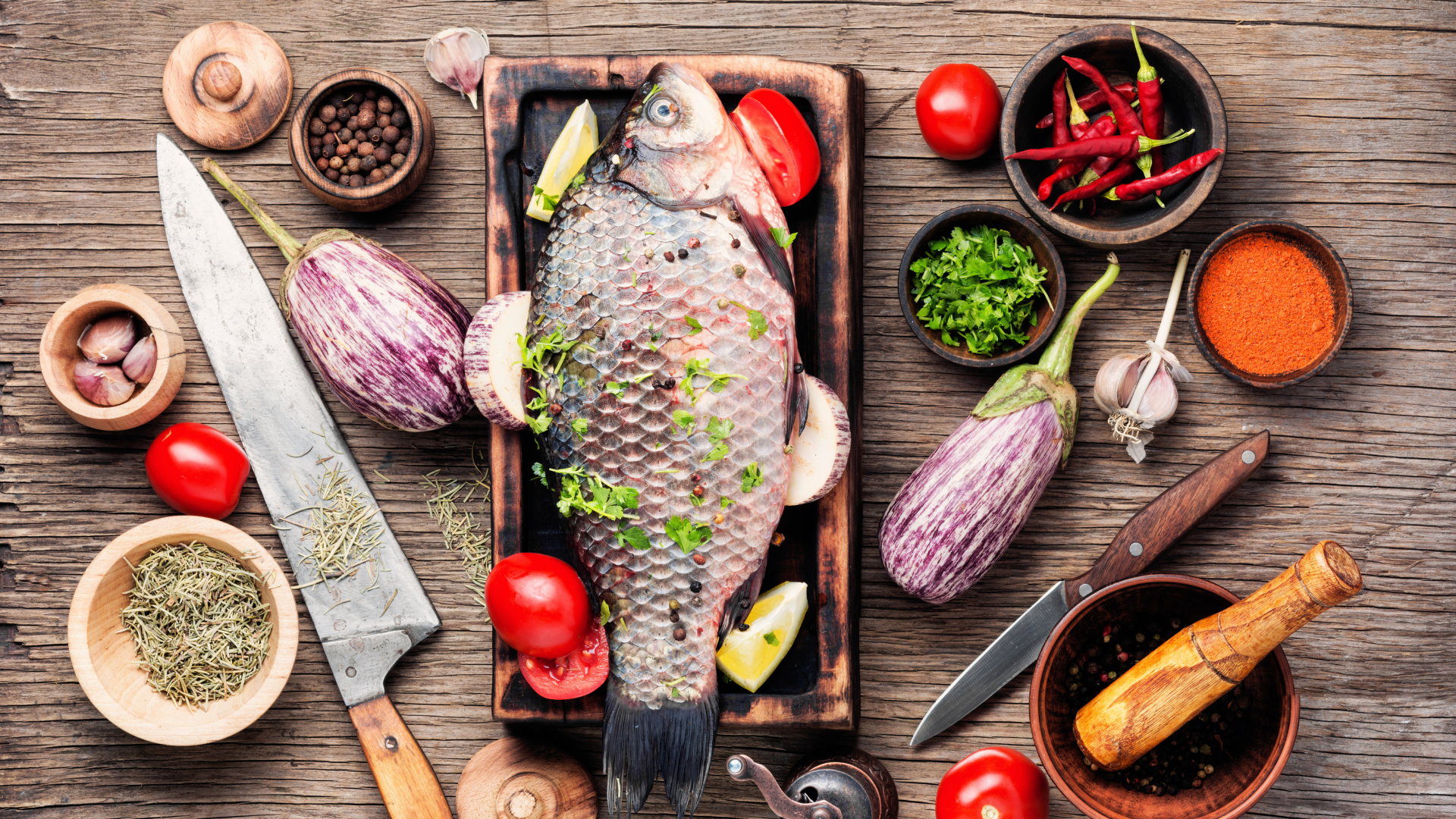Yes, fish is an excellent natural source of creatine, with levels varying from 3 to 10 grams per kilogram depending on the species. Herring contains more creatine than red meat such as beef, up to 10 grams per kilogram!
But for effective supplementation, and given current environmental issues, it's not clear that this is the best solution for athletes...
Natural creatine via fish calculator
What is the creatine content of fish?
Among creatine-rich foods, fish is an excellent natural source of creatine.
Here are the average creatine contents for 1 kg of raw fish:
Cooking can significantly reduce the creatine content of foods. To maximize creatine intake, opt for short, gentle cooking.
If you eat 200g of salmon, you'll get around 0.9g of creatine, i.e. almost half of an adult's daily creatine requirements, the other half being synthesized naturally by our bodies (liver, kidneys, pancreas) from three amino acids (arginine, glycine, methionine). This is significant, but as we'll see, it's not always a sufficient concentration for the needs of athletes.
Is this enough for an athlete's creatine needs?
How does creatine work?
Creatine is a molecule naturally stored in muscles, and plays a direct role in the production of cellular energy in the human body.
Here's how it works in practice:
- It is transformed into phosphocreatine in the muscles
- During intense effort, it helps regenerateadenosine triphosphate (ATP)
- This reaction provides the energy needed for explosive physical exercise lasting less than 10 seconds.
Our body needs around 2 g of creatine a day. Half is synthesized naturally, the other half must come from the diet.
To obtain 1g of creatine from fish, you would need to consume 250g of herring or 450g of salmon daily.
Why supplement?
Studies show that it is very difficult to achieve optimal creatine levels through diet alone. However, it is the saturation of creatine stocks in athletes that is the source of improved performance, thanks in particular to :
- increased maximum force
- increased power for brief efforts
- increased training volume
How do you carry out an effective creatine cure?
To optimize your performance during intense efforts, there are two creatine cure protocols:
Harris protocol (with loading phase):
- Loading phase (5 days): 20 g/day divided into 4 intakes of 5g
- Maintenance phase: 3-5 g/day for 1 month to 1.5 months
- This method rapidly reaches saturation of muscle stocks.
Hultman protocol (without loading phase):
- 3-5 g/day for 1 month to 1.5 months
- Effects will take longer to appear, but will be equivalent over the long term.
It is recommended to take a break between each course of treatment. Although continuous creatine intake remains safe, alternating cycles with breaks will help you remain sensitive to the molecule.
In both cases, we recommend :
- Take creatine powder with carbohydrates to optimize absorption and adapt the dose according to the chosen protocol.
- Taking creatine on days off
- Prefer post-workout creatine intake whenever possible
Supplementation helps improve performance during high-intensity efforts, while maintaining a balanced diet. It is a particularly interesting dietary supplement for explosive sports and bodybuilding.
To achieve this saturation dose via fish, you would need to consume almost 2 kg of salmon per day! This is neither realistic nor desirable from a nutritional point of view, which is why many athletes turn to quality creatine monohydrate, the best form according to current scientific studies.
Supplementation is also interesting for vegetarian athletes with naturally lower creatine levels!
Taking creatine doesn't make you fat: at Protéalpes, we guarantee a product free of calories, additives and sweeteners. Our Creapure®-certified products are a guarantee of quality with no harmful side-effects for the health of our consumers.
Conclusion
Fish, particularly herring, salmon and tuna, are excellent natural sources of creatine.
However, their intake remains insufficient to achieve the optimal doses required for bodybuilding and high-intensity sports.
As a result, many athletes, once they have optimized their training and nutrition, choose to supplement with creatine monohydrate to maximize their performance.
To find out more :
- Fish are an excellent source of natural creatine, but did you know that synthetic forms are also available? We explain the difference between natural and synthetic creatine.
- If you already eat fish for its creatine content and are supplementing, you may be wondering which drink to take it with, or whether adding it to coffee is a good idea.
- Some people also wonder about a potential link between creatine and tendonitis, or whether it's wise to take creatine in the evening. Protéalpes pharmacists take stock of these issues.
- Another frequently asked question: should I opt for a preworkout or creatine to maximize my workouts after a good meal rich in fish?
- Finally, for specific or vegan diets, it's good to know that plant-based creatine is available, without any ingredients of animal origin, or even fish.














